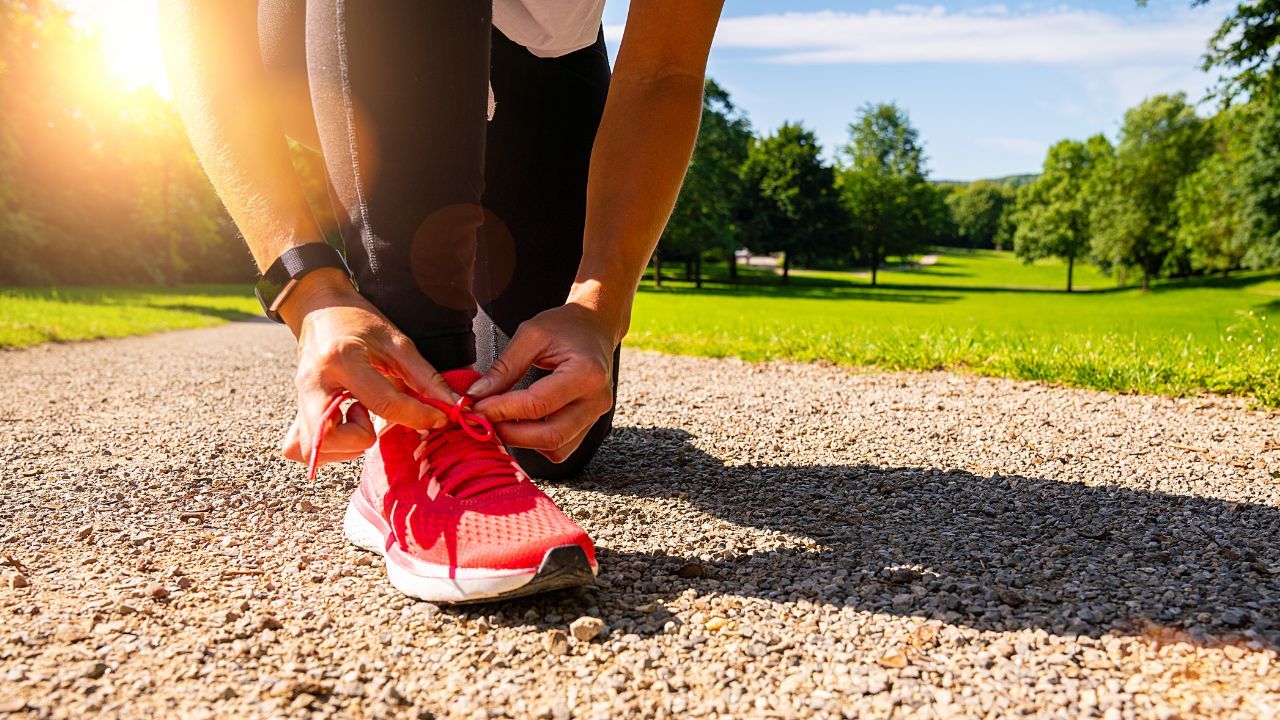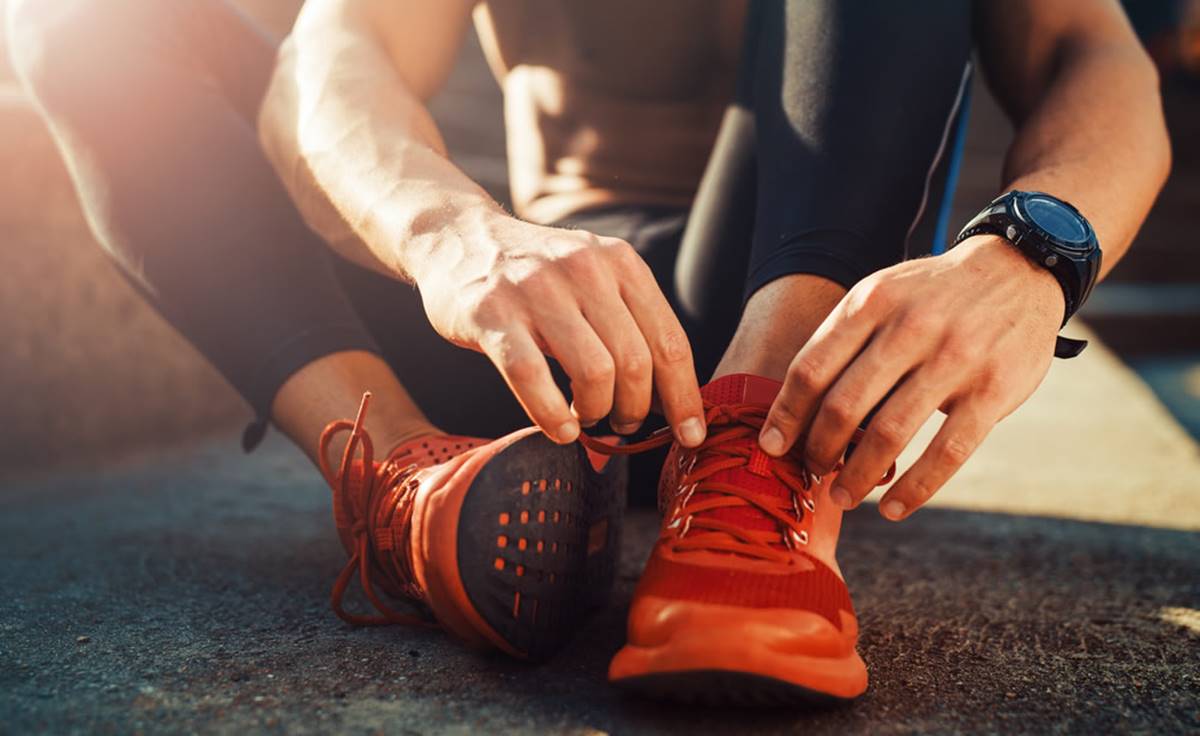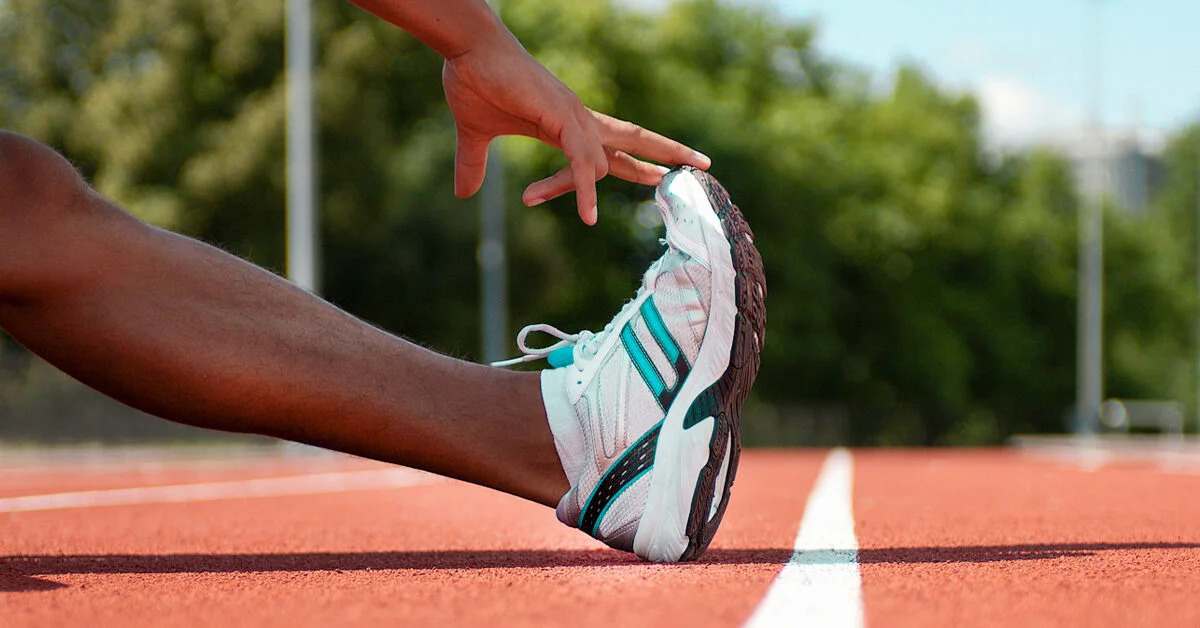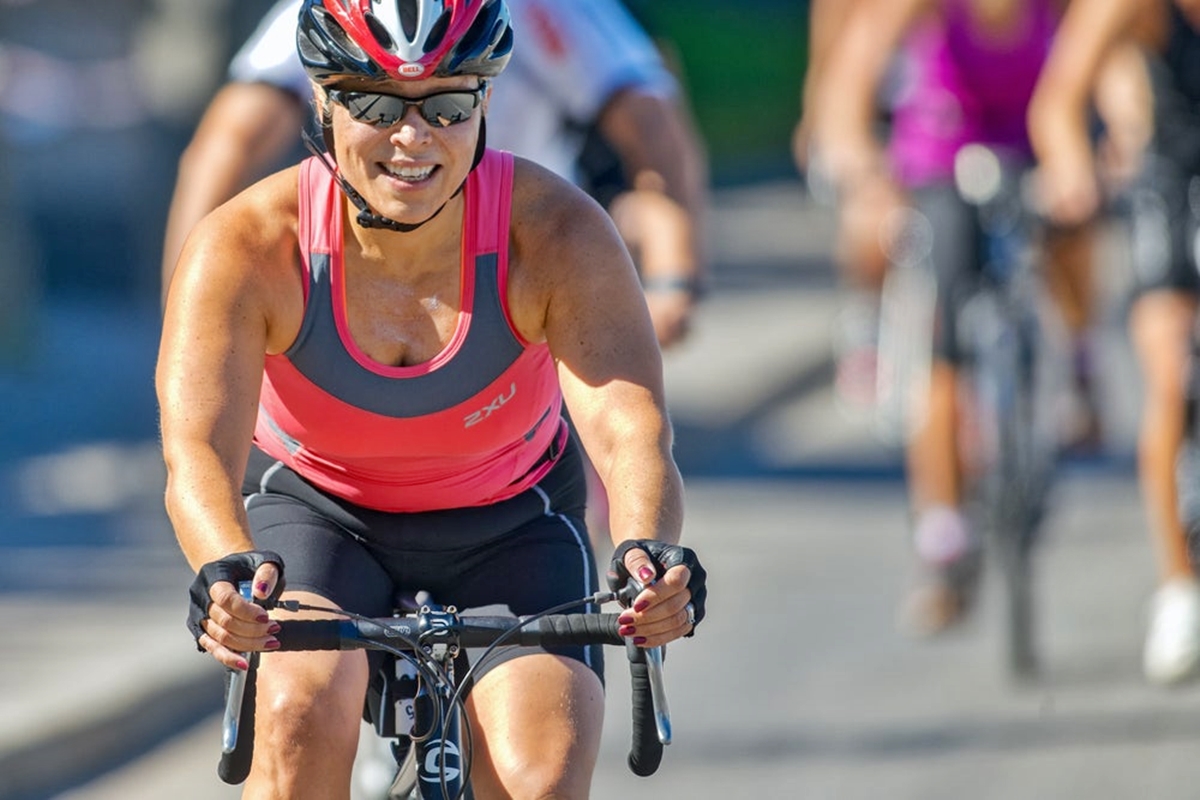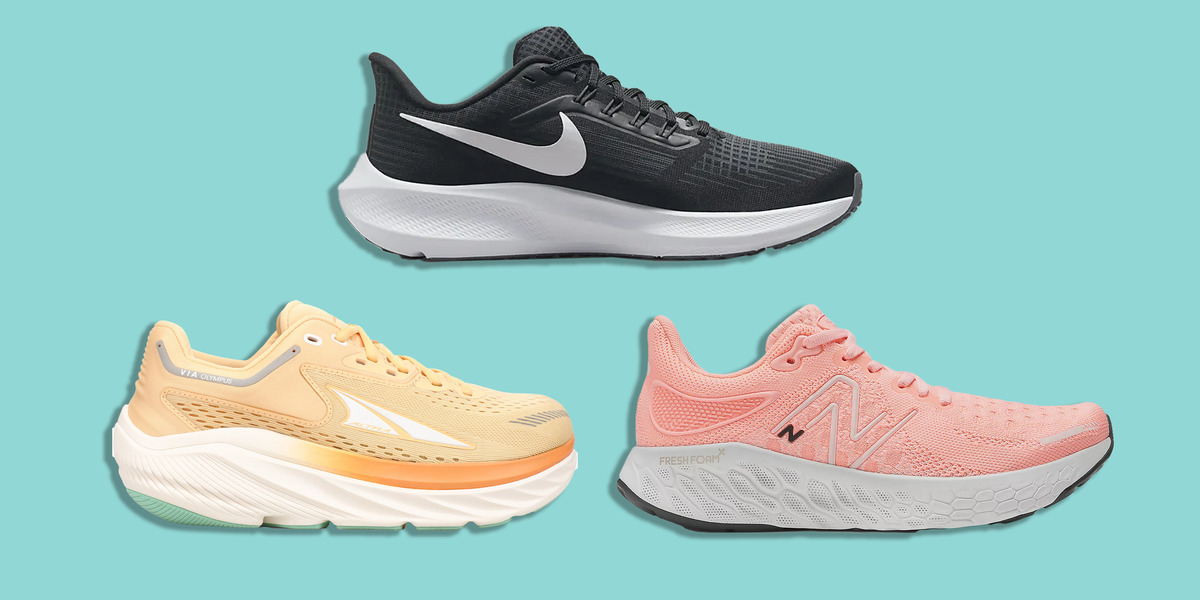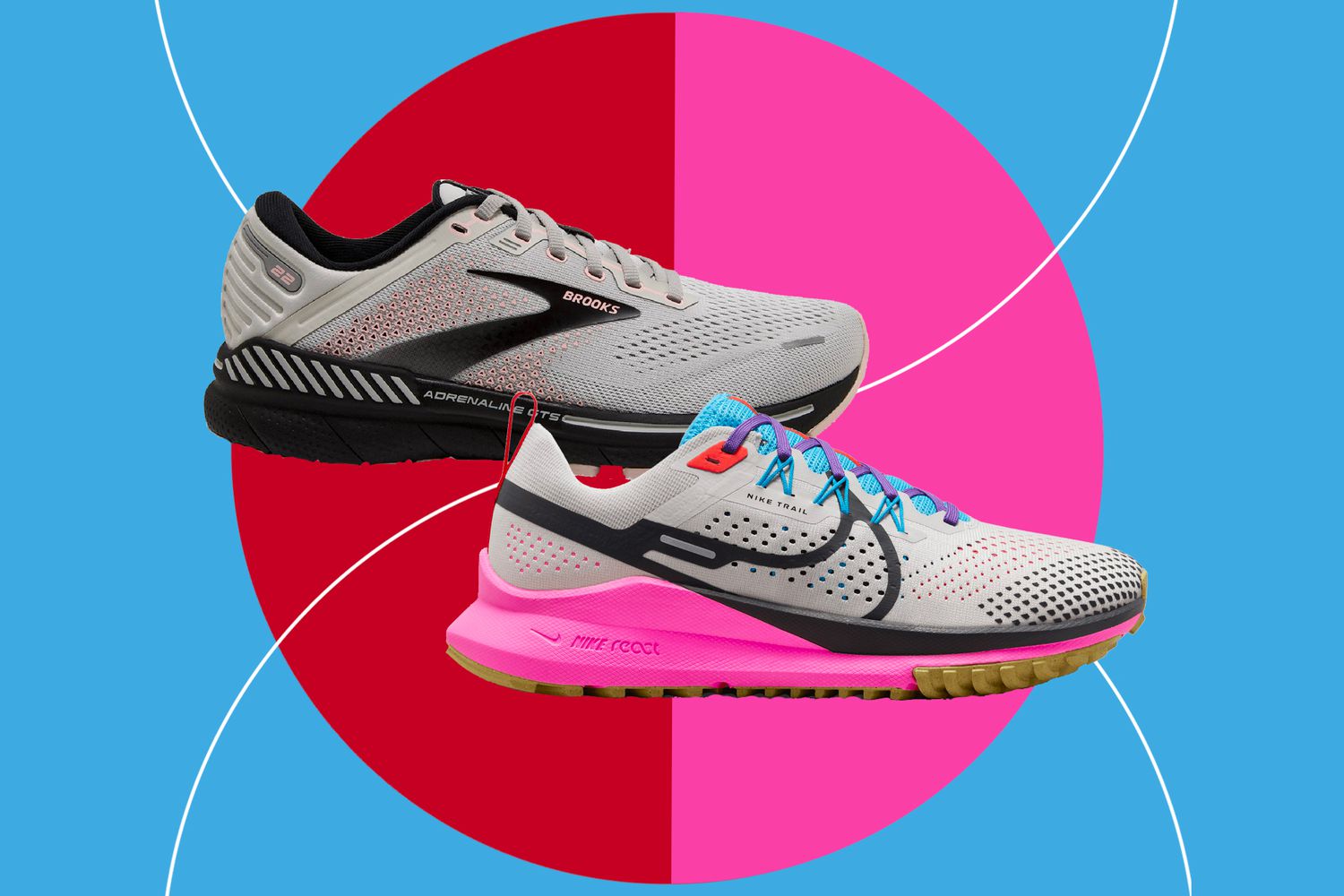

Featured
How Much Should I Spend On Running Shoes
Modified: May 22, 2024
Looking for featured running shoes? Find out how much you should spend on quality footwear for a comfortable and enjoyable running experience.
Introduction
When it comes to running, having the right pair of shoes is crucial. Not only can the right shoes enhance your performance and prevent injuries, but they can also provide the comfort and support you need to enjoy your runs to the fullest. However, with so many options available on the market, it can be challenging to determine how much you should spend on running shoes.
Factors such as your foot type, budget considerations, running frequency and distance, as well as shoe features and technology, all play a role in finding the perfect pair. By taking these factors into account and getting professionally fitted, you can ensure that you find a pair of running shoes that meets your needs and helps you achieve your running goals.
In this article, we will delve into the key factors to consider when determining how much to spend on running shoes. From analyzing your foot type to understanding how shoe features can enhance your running experience, we will provide you with the insights and tips you need to make an informed decision.
Remember, finding the right running shoes is not just about buying the most expensive pair on the market. It’s about finding the shoes that fit well, provide the necessary support, and cater to your specific running needs. So, let’s dive in and explore the factors that will help you find the perfect pair of running shoes without breaking the bank.
Factors to Consider
When determining how much to spend on running shoes, it’s important to consider several key factors. By taking these factors into account, you can make an informed decision that aligns with your budget and running needs.
Foot Type Analysis: Understanding your foot type is crucial in finding the right running shoes. There are three main types of foot arches: low, medium, and high. Each type requires different levels of support and cushioning. If you have high arches, you may need more cushioning to absorb impact, while those with flat feet may benefit from greater stability. Consider visiting a specialty running store or consulting with a podiatrist to determine your foot type and the type of shoe that will best support your feet.
Budget Considerations: Your budget will play a role in deciding how much to spend on running shoes. While it may be tempting to splurge on the latest high-end models, it’s important to find a balance between quality and affordability. Keep in mind that higher price tags don’t always guarantee superior performance or durability. Evaluate your budget and aim to invest in a reputable brand with a proven track record of producing reliable and comfortable running shoes.
Determining Shoe Lifespan: Consider the lifespan of the running shoes you intend to purchase. High-quality shoes with durable materials tend to last longer, reducing the need for frequent replacements. However, keep in mind that the lifespan of running shoes can vary depending on factors like mileage, terrain, and your running style. It’s generally recommended to replace your running shoes every 300-500 miles or when you notice significant wear and tear.
Running Frequency and Distance: The frequency and distance of your runs should also be taken into consideration. If you’re a casual runner who hits the pavement a few times a week for shorter distances, you may not need to spend as much on running shoes compared to an avid runner training for marathons or long-distance races. Higher mileage runners require shoes with more durability and cushioning to withstand the repetitive impact.
Shoe Features and Technology: Different running shoes come with various features and technologies designed to enhance your running experience. From lightweight materials for faster and more efficient runs to advanced cushioning systems that provide optimal shock absorption, consider your specific needs and preferences. While these extra features may increase the price of the shoes, they can provide additional comfort and performance benefits.
By considering these factors, you can determine how much you should spend on running shoes that align with your foot type, budget, running frequency, and desired features. Remember, the goal is to find a pair of shoes that provide the necessary support, comfort, and durability to help you achieve your running goals.
Foot Type Analysis
Understanding your foot type is a crucial step in determining the right running shoes for you. Our feet are unique, and different foot types require different levels of support and cushioning to prevent injuries and enhance performance. By analyzing your foot type, you can make an informed decision on the type of running shoe that best fits your needs.
There are three main types of foot arches: low, medium, and high. To determine your foot type, you can perform a simple wet test. Wet the sole of your foot and then step onto a piece of paper or a surface that will leave a visible imprint.
Low Arches (Flat Feet): If your wet footprint shows a complete imprint with little to no curve on the inside of your foot, you likely have low arches or flat feet. Flat feet tend to have little to no natural arch support, which can lead to overpronation, where the foot rolls inward excessively. For those with low arches, look for running shoes that offer stability and motion control to help correct overpronation.
Medium Arches: If your footprint shows a visible curve along the inside of your foot, you likely have medium arches. Medium arches are considered neutral and have a moderate amount of natural arch support. Runners with medium arches are generally more versatile and can choose from a wider range of running shoe options. Look for shoes with a good combination of cushioning and support.
High Arches: If your footprint shows a narrow, curved imprint with a distinct curve along the inside of your foot, you likely have high arches. High arches offer less surface area for shock absorption, causing the foot to underpronate or roll outward. Look for running shoes with extra cushioning to help absorb impact and provide more stability for your feet.
It’s important to note that everyone’s feet are unique, and while these general foot types can provide a starting point, individual variations may exist. Consulting with a podiatrist or visiting a specialty running store can provide more accurate analysis and guidance in finding the right running shoes for your specific foot type.
Remember, selecting running shoes that align with your foot type can help prevent common running injuries such as shin splints, plantar fasciitis, and stress fractures. Take the time to understand your foot type and invest in running shoes that offer the appropriate level of support and cushioning for a comfortable and injury-free running experience.
Budget Considerations
When it comes to purchasing running shoes, your budget is an important factor to consider. Running shoes can range in price from affordable options to high-end models with premium features. While it may be tempting to splurge on the latest and most expensive shoes on the market, it’s essential to find a balance between quality and affordability.
Keep in mind that price doesn’t always correlate with the quality or performance of running shoes. More expensive shoes often incorporate advanced technologies, premium materials, and additional features. However, this doesn’t mean that lower-priced shoes are necessarily inferior. Many reputable brands offer affordable running shoe options that provide excellent comfort and durability.
When determining your budget for running shoes, consider the following:
- Quality: Look for trustworthy and well-established brands that have a reputation for producing high-quality running shoes. These brands have invested time and research into developing shoes that offer optimal support and performance. Don’t be swayed solely by price; evaluate the overall quality and durability of the shoes.
- Previous Experience: Reflect on your past experiences with running shoes. Have you had success with more affordable options? Or have you found that investing in higher-priced shoes has provided better comfort and performance? Consider what has worked for you in the past and use that as a reference point in determining your budget.
- Long-Term Investment: It’s important to view the purchase of running shoes as a long-term investment in your running journey. While high-quality shoes may have a higher upfront cost, they can provide greater longevity, meaning you won’t have to replace them as frequently. This can be more cost-effective in the long run compared to buying cheaper shoes that wear out quickly.
- Sales and Discounts: Look out for sales, discounts, and promotions offered by running shoe retailers. Many stores offer seasonal sales, clearance events, or loyalty program discounts that can significantly lower the price of running shoes. Be patient and keep an eye out for these opportunities to get the best value for your budget.
Ultimately, the ideal budget for running shoes is a personal decision that depends on your financial situation and running goals. Find a balance that allows you to invest in a reliable and comfortable pair of shoes without breaking the bank.
Remember, the goal is to find running shoes that provide the necessary support, cushioning, and durability for your individual needs. Don’t be solely guided by price; consider overall quality and value for money to make a wise investment in your running gear.
Determining Shoe Lifespan
Understanding the lifespan of your running shoes is an essential consideration when determining how much to spend on them. While the durability of running shoes can vary depending on factors such as construction, materials, and usage, it’s generally recommended to replace them every 300 to 500 miles.
Keep in mind that this mileage range is a general guideline, and several factors can influence the lifespan of your shoes:
- Mileage and Frequency: If you’re running longer distances or more frequently, your shoes will experience more wear and tear. Higher mileage runners may need to replace their shoes more often compared to casual runners who cover fewer miles.
- Terrain: The type of surface you run on can also affect the longevity of your shoes. Rough or uneven terrain can put additional stress on the shoe’s materials, causing them to wear out faster. Consider choosing shoes with more durable outsoles if you frequently run on trails or challenging surfaces.
- Running Style: Your running gait and mechanics can impact the wear pattern of your shoes. If you notice excessive wear on specific areas of the shoe, such as the heel or toe, it may be an indication that your running style is causing uneven stress on those areas. Getting a professional gait analysis can help identify any issues and guide you in selecting the right shoes for your running style.
Additionally, it’s important to pay attention to the overall condition of your running shoes. Signs that your shoes may need replacing include significant wear on the outsole, visible creasing or breaking down of midsole cushioning, and worn-down tread patterns. These signs indicate that the shoes are no longer providing the necessary support and cushioning.
While investing in high-quality and durable running shoes can prolong their lifespan, it’s crucial to prioritize the health and safety of your feet. Worn-out shoes can lead to discomfort, pain, and an increased risk of injuries. Don’t push your shoes past their recommended point of replacement to save money in the short term.
Ultimately, listen to your body and monitor the condition of your running shoes. Recognize when it’s time to retire a pair and invest in a new one to ensure optimal performance and reduce the risk of injuries. By considering the mileage, terrain, and your running style, you can determine the ideal lifespan of your shoes and budget accordingly.
Running Frequency and Distance
One important factor to consider when determining how much to spend on running shoes is your running frequency and the distances you cover. The intensity and duration of your runs can impact the wear and tear on your shoes, requiring different levels of cushioning, support, and durability.
If you’re a casual runner who runs a few times a week for shorter distances, you may not need to spend as much on running shoes compared to someone who runs daily or covers longer distances.
Here are some considerations based on running frequency and distance:
- Casual Runners: If you run casually a couple of times a week or for shorter distances, you may not need the highest-priced running shoes. Look for shoes with sufficient cushioning and support for your comfort, but don’t feel obligated to spend a considerable amount on extra features designed for more intense training.
- Regular Runners: If running is a regular part of your fitness routine, investing in mid-range running shoes may be a good option. These shoes typically offer a balance of comfort, durability, and support, suitable for consistent training sessions without the need for extra performance features.
- Long-Distance Runners: If you’re an avid runner training for longer distances, such as marathons or ultra-marathons, it’s worth considering higher-end running shoes. These shoes often provide advanced cushioning, stability features, and improved energy return, which can help reduce fatigue during longer sessions.
- Race Specific Shoes: For competitive runners or those looking to improve their race performance, race-specific shoes may be worth considering. These shoes are designed to be lightweight, responsive, and provide a performance boost during races. Keep in mind that they may have a shorter lifespan as they prioritize weight reduction over long-term durability.
It’s essential to strike a balance between the needs of your running routine and your budget. While investing in high-quality running shoes can enhance your performance and reduce the risk of injuries, be mindful not to overspend on features you may not fully utilize based on your running frequency and distance.
Ultimately, the goal is to have comfortable and supportive shoes that allow you to run without pain or discomfort, regardless of your running frequency and distance. Consider your running goals and routines when determining how much to spend on running shoes, ensuring they align with your specific needs and budget.
Shoe Features and Technology
The world of running shoes is constantly evolving, with advancements in technology and innovative features aimed at enhancing performance and comfort. When determining how much to spend on running shoes, it’s important to consider the various features and technologies that may benefit your running experience.
Here are some key shoe features and technologies to consider:
- Cushioning: The cushioning system in running shoes provides shock absorption and impact protection. Different shoes offer varying levels of cushioning, ranging from plush and soft to firm and responsive. Consider your preference and the type of surface you primarily run on to determine the appropriate level of cushioning for your needs.
- Support and Stability: Running shoes can offer different levels of support and stability to address various biomechanical needs. Look for shoes that provide appropriate arch support and control excessive pronation or supination based on your foot type and running style.
- Lightweight Construction: Lightweight running shoes can enhance speed and agility, making them popular among competitive runners. These shoes often employ advanced materials and construction techniques that prioritize minimizing weight without sacrificing comfort or support.
- Breathability: Proper ventilation and breathability in running shoes are vital to keep your feet cool and dry during runs. Shoes with breathable upper materials or mesh panels allow for optimal airflow and ventilation, reducing the likelihood of discomfort and blisters caused by excess moisture.
- Energy Return: Some running shoes incorporate technologies that aim to provide energy return, meaning they absorb and then release energy with each footstrike, propelling you forward. These shoes can enhance efficiency and help you maintain a faster pace during your runs.
- Traction: The outsole of running shoes plays a critical role in providing traction and grip on various surfaces. Shoes with durable and well-designed outsoles can offer reliable traction, whether you’re running on roads, trails, or wet conditions.
Keep in mind that the inclusion of these features and technologies can affect the price of running shoes. While it’s tempting to go for the option with the most advanced features, be sure to assess your specific needs and prioritize the features that will benefit you the most.
Additionally, consider the longevity and durability of the shoe features. Some advanced technologies may offer short-term performance benefits but have a shorter lifespan, requiring more frequent shoe replacements.
Ultimately, finding the right balance between features, comfort, and budget is crucial when deciding how much to spend on running shoes. Consider your running style, goals, and personal preferences to determine which features and technologies are essential for your optimal running experience.
Trying Shoes and Getting Professionally Fitted
When it comes to finding the right running shoes, trying them on and getting professionally fitted can make a world of difference. While online shopping offers convenience, visiting a specialty running store and getting personalized assistance can ensure that you find the perfect pair that meets your specific needs.
Here are some reasons why trying on shoes and getting professionally fitted is important:
- Proper Sizing: Shoe sizes can vary between brands and even different shoe models. Trying on shoes allows you to determine the right size and ensure a proper fit. A shoe that is too small or too big can lead to discomfort, blisters, and even impact your running performance.
- Gait Analysis: A gait analysis, performed by professionals at specialty running stores, assesses your running mechanics and foot strike pattern. This analysis can provide insights into your specific pronation tendencies and guide you towards shoes with the appropriate stability and support features.
- Individual Needs: Your running and foot needs are unique. By consulting with a professional, you have the opportunity to discuss any foot issues, injuries, or concerns you may have. They can then recommend shoes that address your specific needs, ensuring maximum comfort and performance.
- Expert Advice: Professionals at running stores have in-depth knowledge of various shoe brands, models, and technologies. They stay updated on the latest advancements and can provide expert advice on which shoes are most suitable for your running style, foot type, and goals.
- Trying Different Models: Trying on multiple shoe models allows you to compare and assess their fit, comfort, and performance. This hands-on approach helps you make a more informed decision and find the shoe that feels the best for you.
During the fitting process, it’s important to communicate openly with the professional fitter about any concerns or preferences you may have. Be sure to bring your running socks and any orthotics or inserts you use to get the most accurate fit and feel for the shoes.
Remember, finding the right running shoes is a combination of science and personal preference. While professional fitting is invaluable, it’s also essential to trust your instincts and choose shoes that feel comfortable and supportive during your trial run.
Investing time and effort into trying on shoes and getting professionally fitted can significantly improve your running experience. It ensures that you find the right shoes that allow you to run with comfort, confidence, and reduced risk of injuries.
Tips for Finding the Right Fit
Finding the right fit for your running shoes is essential for comfort, performance, and injury prevention. Here are some tips to help you find the perfect fit:
- Visit a Specialty Running Store: Specialty running stores have trained professionals who can guide you through the fitting process. They will measure your foot, perform a gait analysis, and provide expert advice.
- Measure Both Feet: It’s important to measure both feet as they may vary in size. Fit your shoes to the larger foot to ensure a comfortable and accommodating fit.
- Try Shoes on in the Afternoon: Your feet can swell throughout the day, so it’s recommended to try on shoes in the afternoon when your feet are at their largest.
- Wear Appropriate Socks: Wear the type of socks you usually run in when trying on shoes. This ensures a more accurate fit and prevents any surprises when you wear them during your runs.
- Check for Toe Wiggle Room: There should be a thumb’s width of space between your longest toe (usually the big toe) and the end of the shoe. This allows for natural movement and prevents jamming of the toes during the running motion.
- Consider Width: Pay attention to the width of the shoe, especially if you have wider or narrower feet. Ensure that the shoe provides a snug fit without being too tight or too loose.
- Walk and Run in the Shoes: Take a short walk or jog around the store to get a sense of how the shoes feel during movement. This can help identify any discomfort or rubbing and give you a better idea of the shoe’s performance.
- Trust Your Comfort Level: Ultimately, the most important factor in determining the right fit is your comfort. If the shoes feel uncomfortable or cause any pain or pressure points, they may not be the right fit for you, regardless of the features or recommendations.
Remember, finding the right fit may require trying on several pairs of shoes and taking the time to assess their feel and performance. Don’t be hesitant to ask questions and seek guidance from the professionals at the running store.
By focusing on finding the right fit, you are investing in your overall running experience. Comfortable and well-fitted shoes can enhance your performance, reduce the risk of injuries, and make every run more enjoyable.
Importance of Proper Footwear
Proper footwear plays a crucial role in not only enhancing performance but also ensuring the overall health and well-being of runners. Investing in the right pair of running shoes is essential for several reasons:
- Injury Prevention: Wearing shoes that provide the appropriate support and cushioning can help prevent common running injuries. Proper footwear can minimize the impact on your joints, reduce stress on your feet, and alleviate the risk of conditions such as plantar fasciitis, shin splints, and stress fractures.
- Comfort and Enjoyment: Running in comfortable shoes significantly enhances the enjoyment of your runs. Shoes that fit well and provide adequate support can minimize discomfort, blisters, and foot fatigue, allowing you to focus on the rhythm and pleasure of running itself.
- Improved Performance: The right pair of running shoes can enhance your performance by providing the necessary stability, cushioning, and grip. Well-designed footwear can optimize your running mechanics, help you maintain good form, and even contribute to increased speed and efficiency.
- Protection from Impact: Running puts repetitive stress on your feet, and proper footwear helps absorb and disperse the impact forces. Shoes with good cushioning can reduce the strain on your muscles, tendons, and joints, minimizing the risk of overuse injuries over time.
- Individual Needs: Every runner has unique foot characteristics and running styles. Properly fitted shoes address individual needs and provide customized solutions. Whether you have high arches, flat feet, or specific gait issues, the right footwear can support your feet appropriately, reducing the risk of imbalances and discomfort.
- Confidence and Motivation: Wearing the right shoes can boost your confidence and motivation. When you’re fully supported and comfortable, you’ll feel more confident in your ability to tackle any distance or goal. This psychological boost can enhance your running experience and help you stay motivated to achieve your targets.
Remember, proper footwear is not just a luxury for elite athletes; it is essential for runners of all levels. The investment in high-quality running shoes tailored to your specific needs is worth every penny.
Regularly check the condition of your running shoes and replace them when necessary. As they age and wear out, their ability to provide the necessary support and protection diminishes. It’s recommended to monitor the mileage and signs of wear and tear to ensure that you are running in shoes that still offer optimal performance.
By understanding the importance of proper footwear and finding the right pair for your feet, you can enhance your running experience, reduce the risk of injuries, and set yourself up for success in achieving your running goals.
Conclusion
When it comes to purchasing running shoes, there are several factors to consider to ensure you make the right choice. Understanding your foot type, budget considerations, running frequency and distance, shoe features and technology, and getting professionally fitted all play a role in finding the perfect pair.
When determining how much to spend on running shoes, it’s important to strike a balance between quality, affordability, and your personal needs. While higher-priced shoes may offer advanced features and technologies, they are not always necessary for every runner. It’s crucial to find running shoes that fit well, provide adequate support and cushioning, and cater to your specific running goals.
Remember, proper footwear is essential for injury prevention, comfort, and optimal performance. Investing in high-quality running shoes that align with your foot type, running frequency, and desired features can make a significant difference in your running experience.
Take the time to try on shoes, get professionally fitted, and consult with experts in specialty running stores to ensure you find the right fit. Additionally, consider the lifespan of your shoes and replace them when necessary to maintain the necessary support and protection.
By considering all of these factors, you can confidently select running shoes that support your feet, enhance your performance, and contribute to your enjoyment of running. So, lace up your shoes and hit the road or trail with comfort, confidence, and the knowledge that you’ve made an informed decision about the right running shoes for you.
